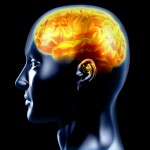Lifelong learning: why it is neuroprotective
 Learning is the physical process of changing our brains. Today we know this is possible at all ages, bringing the concept and practice of lifelong learning to the forefront.
Learning is the physical process of changing our brains. Today we know this is possible at all ages, bringing the concept and practice of lifelong learning to the forefront.
Learning is thought to be “neuro-protective.†Through neuroplasticity, learning increases connections between neurons, increases cellular metabolism, and increases the production of nerve growth factor, a substance produced by the body to help maintain and repair neurons.
When we learn, we create physical changes inside our brains. By practicing a skill, we repeatedly stimulate the same area of the brain, which strengthens existing neural connections and creates new ones (think about the London taxi drivers). Over time, we can become more cognitively efficient, using fewer neurons to do the same job. And the more often we fire up certain mental circuits, the easier it is to get them going again.
Thus learning is critical at all ages to maintain good brain functions. According to neurobiologist Dr. James Zull, whose interview can be found at the end of the present Chapter, one way to motivate ourselves to keep learning is to search for meaningful bridges between what we want to learn and what we already know. When we do so, we cultivate our neuronal networks. “We become our own gardeners.â€
Keep learning by reading more articles in the Resources section, and also please consider joining our free monthly Brain Fitness eNewsletter
This new online resource is based on the content from the book The SharpBrains Guide to Brain Fitness (May 2009, $19.95), by Alvaro Fernandez and Dr. Elkhonon Goldberg.
